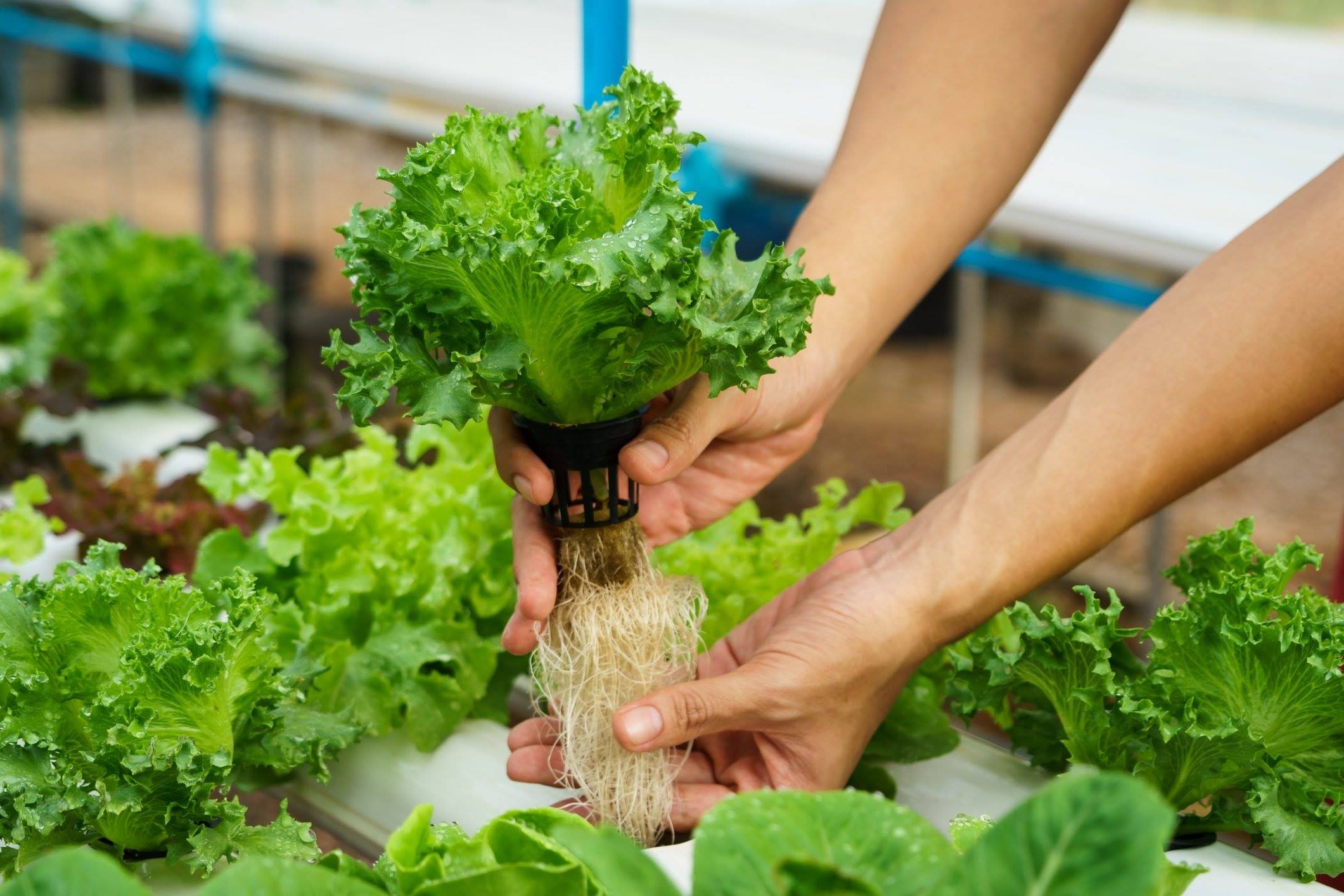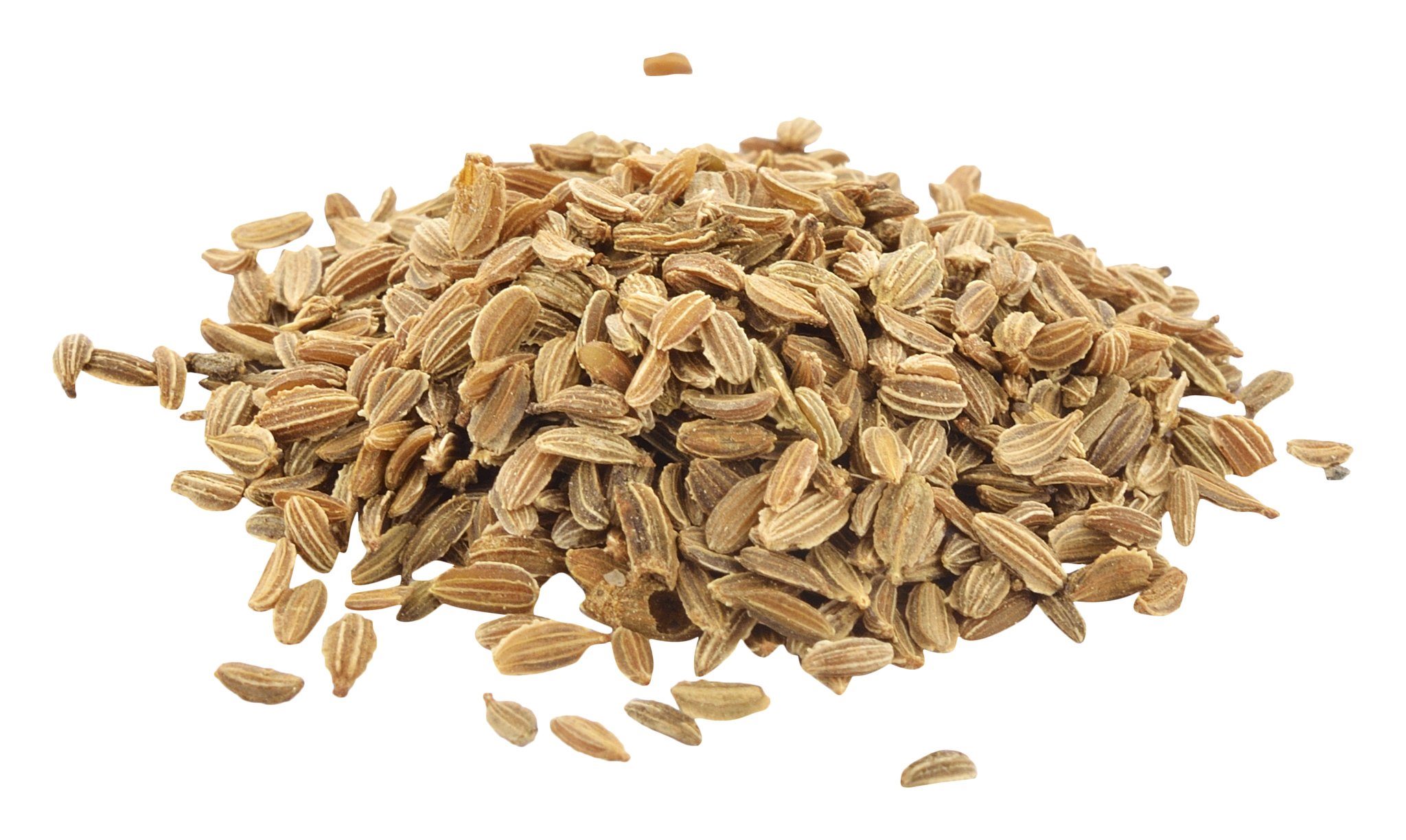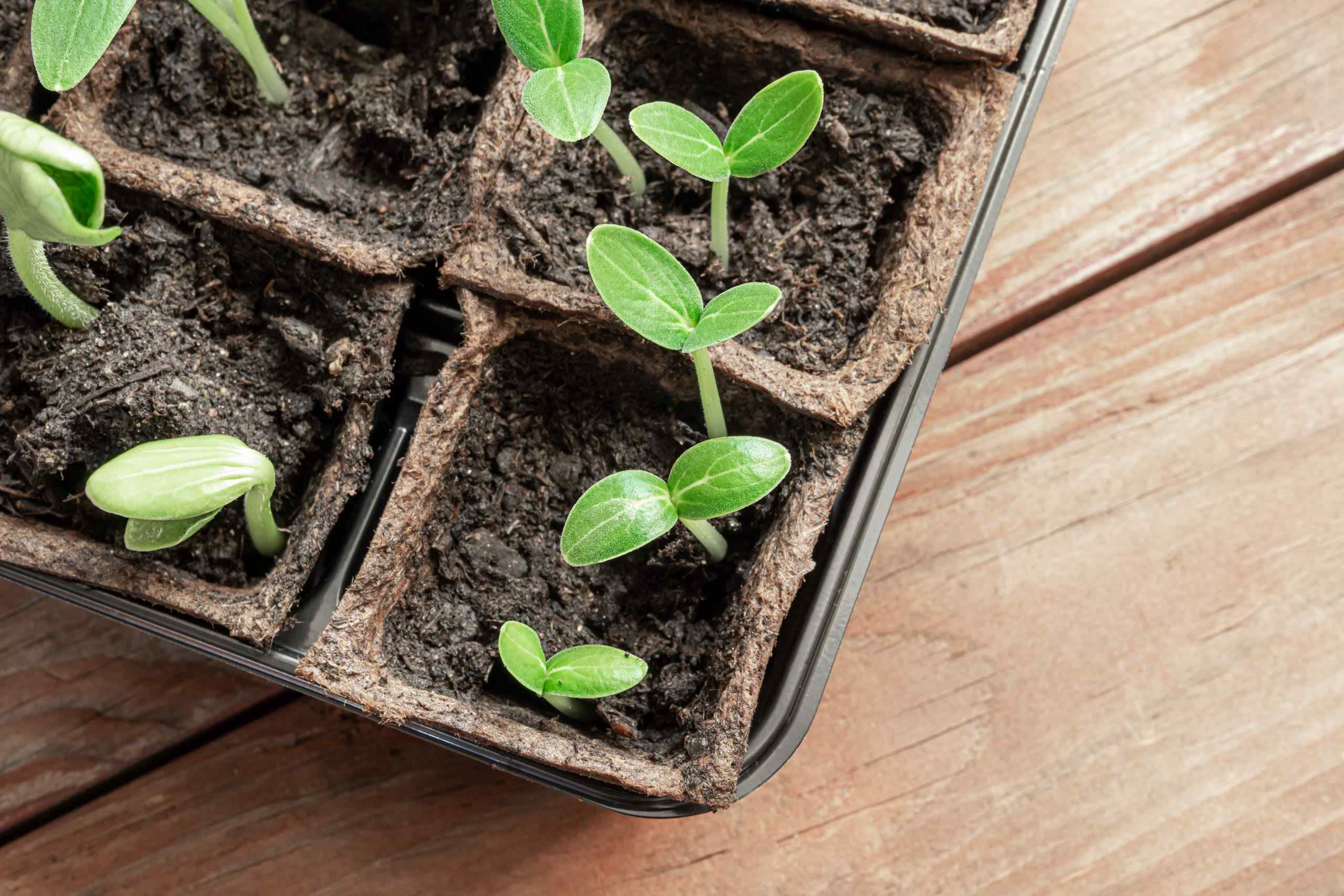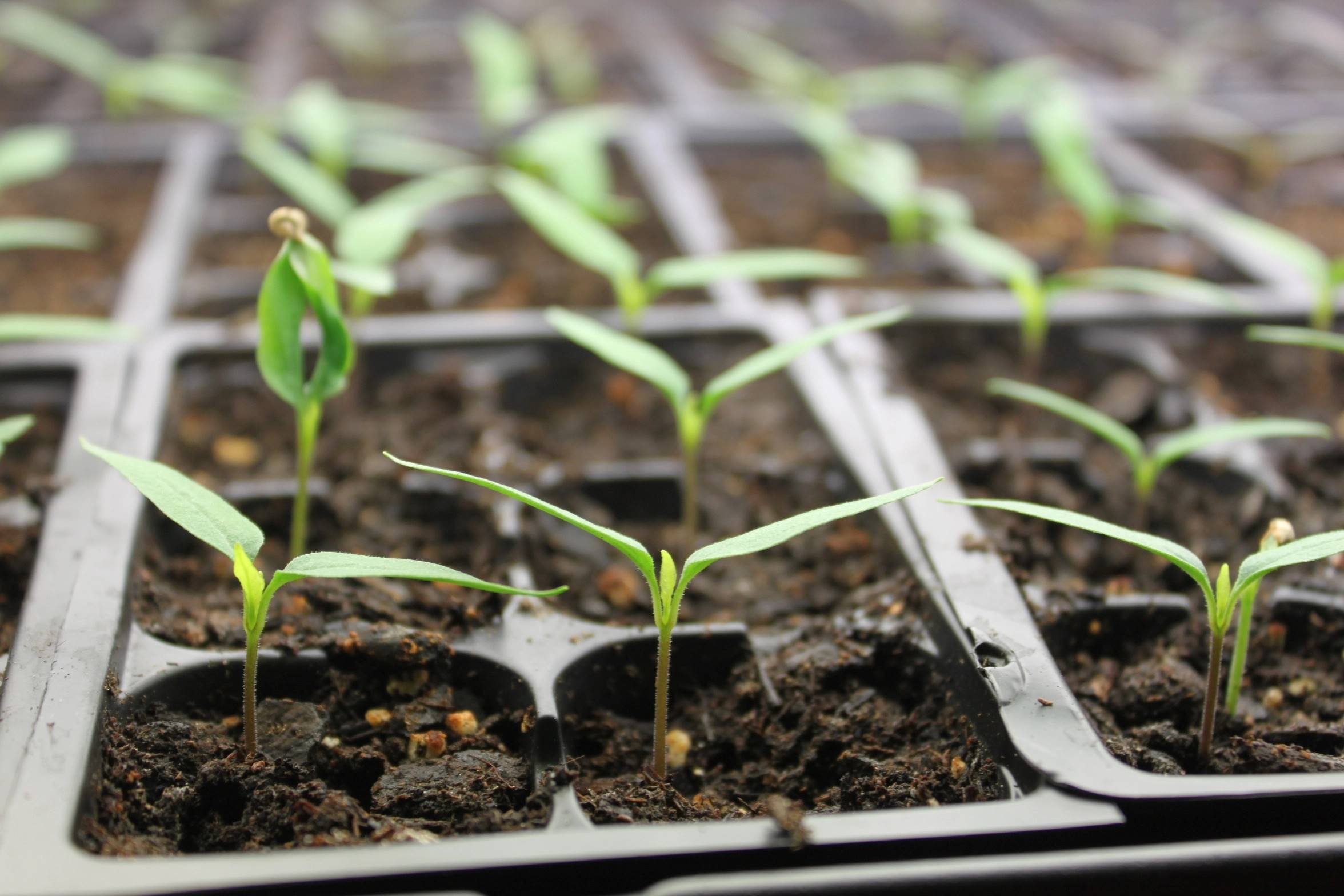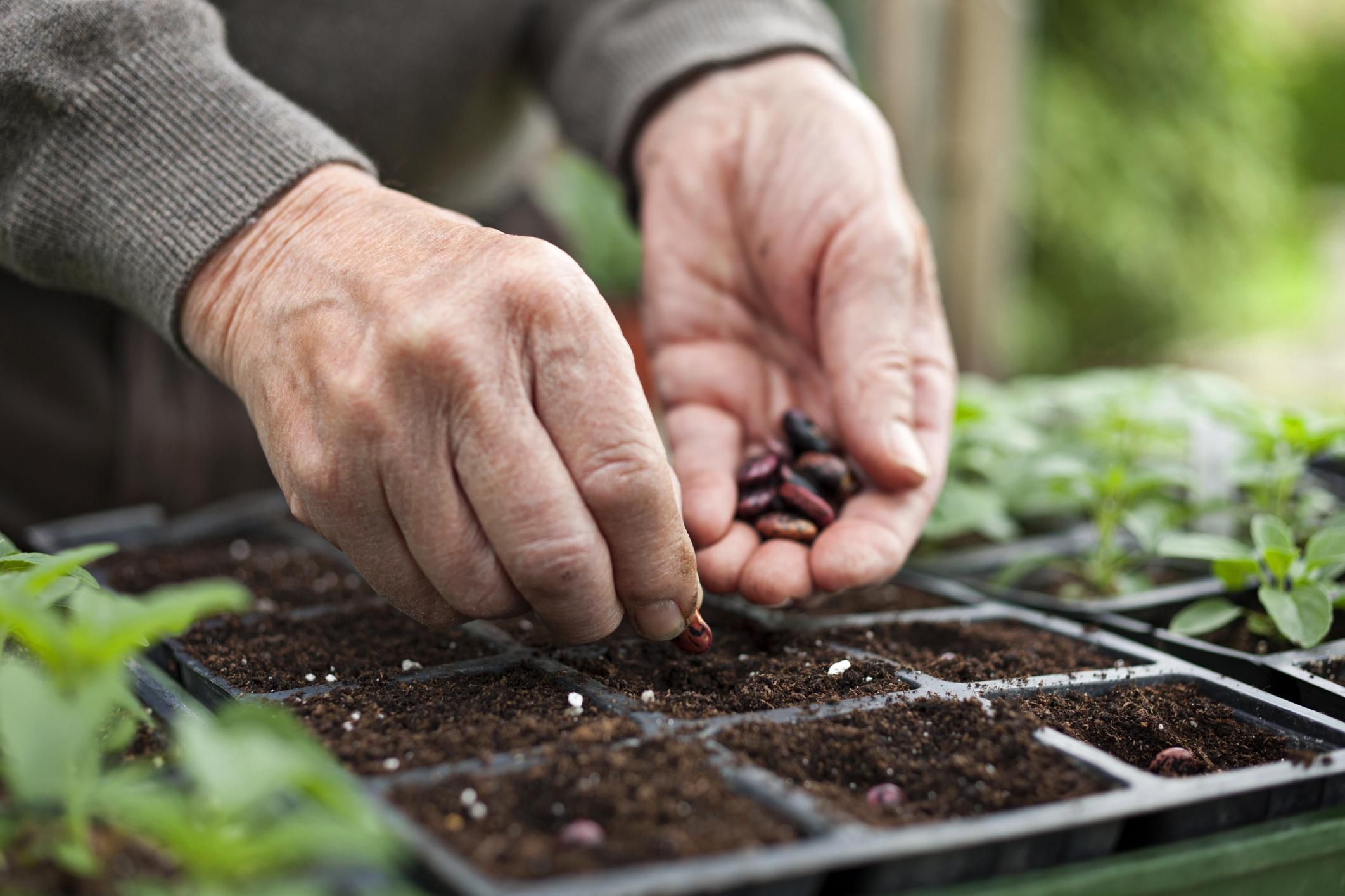Home>Types of Gardening>Edible Gardening>How To Start Seeds In Hydroponics
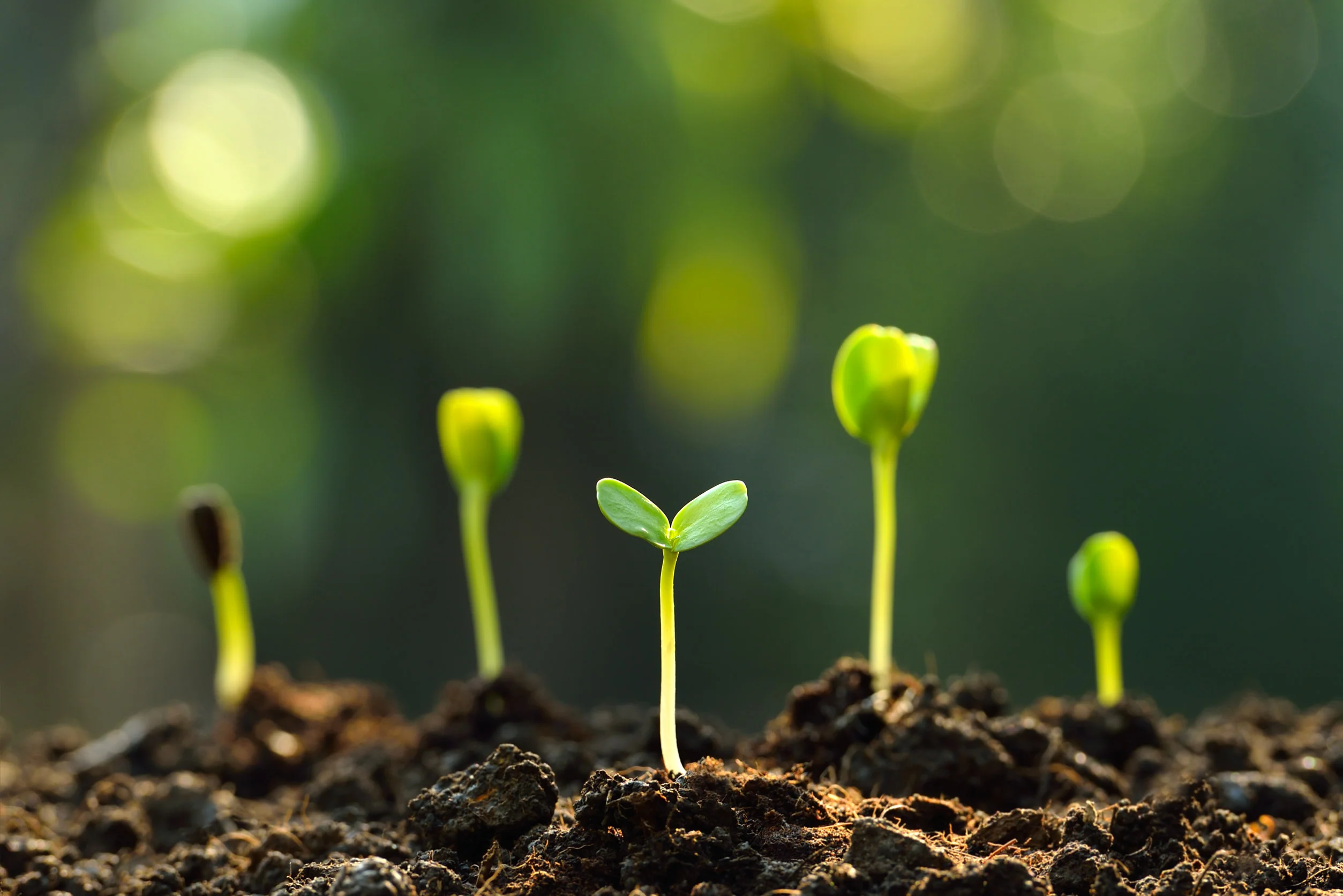

Edible Gardening
How To Start Seeds In Hydroponics
Modified: January 22, 2024
Learn the art of edible gardening with this comprehensive guide on how to start seeds in hydroponics. Grow your own food easily and efficiently with hydroponic gardening techniques.
(Many of the links in this article redirect to a specific reviewed product. Your purchase of these products through affiliate links helps to generate commission for Chicagolandgardening.com, at no extra cost. Learn more)
Table of Contents
- Introduction
- Benefits of Starting Seeds in Hydroponics
- Essential Equipment Needed for Starting Seeds in Hydroponics
- Selecting the Right Seeds for Hydroponic Cultivation
- Preparing the Hydroponic System for Seed Germination
- Germinating Seeds in a Hydroponic Environment
- Providing Proper Light and Temperature for Seedlings
- Nurturing Seedlings in a Hydroponic System
- Transferring Seedlings to a Hydroponic Growing System
- Tips for Successful Seed Starting in Hydroponics
- Conclusion
Introduction
Welcome to the world of hydroponic gardening! If you’re an avid gardener or someone with a green thumb, you may have considered diving into the world of hydroponics. This innovative method of gardening allows plants to grow without soil, using a nutrient-rich water solution instead. One aspect of hydroponic gardening that many enthusiasts find fascinating is the ability to start seeds in a controlled environment before transferring them to the main hydroponic system.
Starting seeds in hydroponics offers numerous benefits and can be a rewarding experience. Whether you’re a beginner or an experienced gardener, this technique allows you to have greater control over the germination process, resulting in healthier and faster-growing seedlings. In this article, we will explore the various benefits of starting seeds in hydroponics, the essential equipment you’ll need, and the steps to successfully germinate and nurture your seedlings.
While traditional gardening methods involve sowing seeds directly in soil, hydroponic gardening provides a more efficient way to start seeds. With hydroponics, you eliminate the risk of soil-borne diseases, weeds, and inconsistent moisture levels. This method also allows for year-round cultivation, making it ideal for urban gardening or those with limited outdoor space. By harnessing the power of water and nutrients, you can create an optimal environment for seed germination and ensure your plants thrive from the start.
Starting seeds in hydroponics is not only practical but also economical. You have complete control over the nutrient solution, ensuring your plants receive the right balance of essential elements for growth. By eliminating the need for soil, you avoid the costs associated with purchasing potting mix or compost. Additionally, by starting your seeds indoors, you can extend your growing season and have a head start on your harvest.
So, whether you’re interested in growing herbs, vegetables, or flowers, starting seeds in hydroponics is an exciting and rewarding technique. In the following sections, we will dive deeper into the equipment you’ll need, the seed selection process, and the step-by-step guide to successfully start seeds in a hydroponic system. Let’s get started on this journey of cultivating healthy and productive plants!
Benefits of Starting Seeds in Hydroponics
Starting seeds in hydroponics offers numerous advantages over traditional soil-based seed starting methods. Let’s explore some of the key benefits:
- Controlled Environment: With hydroponics, you have complete control over the growing conditions for your seeds. This means you can optimize factors such as temperature, light, and nutrient levels to maximize germination and seedling growth. No more worrying about unpredictable weather conditions or variations in soil quality.
- Faster Germination: Hydroponic systems provide an ideal environment for seed germination. The nutrient-rich water solution ensures that the seeds have all the necessary nutrients readily available, resulting in faster and more uniform germination. This means you can get a head start on your gardening season and enjoy an earlier harvest.
- Healthier Seedlings: Starting seeds in a controlled hydroponic environment leads to stronger and healthier seedlings. The absence of soil-borne diseases and pests reduces the risk of plant infections or stunted growth. Additionally, the optimal nutrient levels in the hydroponic system lead to robust root development and vigorous growth.
- Water Efficiency: Hydroponics is a highly water-efficient method of gardening. The system recirculates and reuses the nutrient solution, minimizing water wastage. This is particularly advantageous in regions with water scarcity or for gardeners looking to reduce their water consumption.
- Year-round Cultivation: Hydroponic gardening allows you to grow plants all year round, regardless of the season. By starting seeds indoors, you are not limited by weather conditions. This is especially beneficial for urban gardeners or those living in colder climates, where outdoor gardening may be limited to a few months.
- Space Optimization: Hydroponic systems are highly space-efficient, making them perfect for those with limited outdoor space. You can set up your hydroponic seed starting system in a small area, such as a greenhouse, spare room, or even a windowsill. This makes hydroponics a viable option for urban dwellers or apartment gardening.
As you can see, starting seeds in hydroponics provides a range of benefits that traditional soil-based gardening methods cannot match. The controlled environment, faster germination, healthier seedlings, water efficiency, year-round cultivation, and space optimization are all compelling reasons for gardeners to explore hydroponic seed starting. In the next section, we will delve into the essential equipment needed to get started with hydroponic seed germination.
Essential Equipment Needed for Starting Seeds in Hydroponics
To successfully start seeds in a hydroponic system, you’ll need a few essential pieces of equipment. Let’s take a look at what you’ll need:
- Seed Trays or Rockwool Cubes: Seed trays or rockwool cubes are used to hold the seeds during germination. These trays should have drainage holes to prevent excess water accumulation. Rockwool cubes are a popular choice as they are pH neutral and provide excellent aeration for the developing roots.
- Hydroponic Reservoir: A hydroponic reservoir is a container that holds the nutrient solution. It should be lightproof to prevent the growth of algae and ideally have a lid to prevent evaporation and contamination. The size of the reservoir will depend on the number of seedlings you plan to grow.
- Air Pump and Air Stones: An air pump and air stones are essential for providing oxygen to the roots of the seedlings. These components help aerate the nutrient solution in the reservoir, preventing root rot and promoting healthy growth.
- Grow Lights: Since seedlings need ample light to grow, investing in good quality grow lights is crucial. LED or fluorescent grow lights are popular options for their energy efficiency and the ability to provide the right light spectrum for optimal plant growth. Position the lights at an appropriate distance above the seedlings to ensure proper coverage.
- pH and EC Meters: pH and EC meters are used to monitor and adjust the pH and nutrient levels in the hydroponic system. Maintaining the correct pH range (around 5.5–6.5) and nutrient concentration ensures optimal nutrient uptake by the seedlings.
- Nutrient Solution: A hydroponic nutrient solution is a blend of essential nutrients necessary for plant growth. You can purchase pre-mixed nutrient solutions formulated specifically for seed starting or create your own using commercial hydroponic nutrients. Ensure that you follow the manufacturer’s instructions for proper mixing and dilution.
- Heating Mat (Optional): If you live in a colder climate or want to speed up germination, a heating mat can be beneficial. Placing the seed tray on a heating mat provides consistent bottom heat, which helps stimulate seed germination.
These are the basic essentials you’ll need to get started with hydroponic seed starting. However, depending on your setup and preferences, you may also consider additional equipment such as a timer for automated lighting and watering, a thermometer to monitor the temperature, and a humidity dome to create a more controlled microclimate for the seeds.
Now that you have an understanding of the necessary equipment, the next step is to select the right seeds for hydroponic cultivation. We’ll explore this in the upcoming section.
Selecting the Right Seeds for Hydroponic Cultivation
Choosing the right seeds is crucial for successful hydroponic cultivation. Not all plants thrive in a hydroponic environment, so it’s important to select varieties that are well-suited for this growing method. Here are some factors to consider when selecting seeds for hydroponics:
- Suitability for Hydroponics: Some plants are naturally better suited for hydroponic cultivation. Leafy greens such as lettuce, kale, and spinach are popular choices as they have shallow root systems and can absorb nutrients efficiently from the nutrient solution. Other ideal options include herbs like basil, cilantro, and parsley, as well as compact fruiting plants like cherry tomatoes and peppers.
- Growth and Germination Time: Look for seeds that have shorter germination and growth times. Since hydroponics typically results in faster growth, choosing seeds with shorter maturation periods allows you to enjoy a faster harvest.
- Compact Growth Habit: Space can be limited in a hydroponic setup, so prioritize plants that have a compact growth habit. Look for bushy or compact varieties that don’t take up excessive vertical or horizontal space, ensuring you can maximize your growing area.
- Resistance to Diseases and Pests: Seed varieties that are known for their resistance to common diseases and pests are advantageous in a hydroponic system. With the absence of soil, the risk of soil-borne diseases is reduced, but pests can still pose a threat. Choosing resistant varieties minimizes the need for chemical treatments and promotes healthier plants.
- Taste and Preferred Cuisine: Ultimately, consider your personal preferences and the dishes you enjoy. Growing your favorite herbs, salad greens, or vegetables in a hydroponic system allows you to have fresh, flavorful produce at your fingertips throughout the year.
When sourcing seeds for hydroponic cultivation, look for reputable seed suppliers that specialize in hydroponic or greenhouse-specific varieties. They often offer seed collections specifically curated for hydroponic growing, taking into account the factors mentioned above.
Remember to follow the specific seed sowing instructions provided by the seed supplier. Certain seeds may require pre-soaking or scarification before sowing, and it’s important to follow these guidelines for successful germination. Additionally, ensure proper storage of seeds in cool and dry conditions to maintain their viability.
Now that you understand how to choose the right seeds for hydroponic cultivation, let’s move on to the next section, where we will discuss the necessary steps to prepare your hydroponic system for seed germination.
Preparing the Hydroponic System for Seed Germination
Before you start germinating your seeds in a hydroponic system, it’s important to properly prepare the system to create an optimal environment for successful germination and healthy seedling growth. Here are the steps to follow:
- Clean and Sterilize: Thoroughly clean and sterilize all components of your hydroponic system, including the reservoir, grow trays, and any tubing or connectors. This helps prevent the growth of harmful bacteria or pathogens that could affect the seedlings.
- Check pH and EC: Use a pH and EC meter to test the water quality in your hydroponic system. Ensure that the pH level is within the recommended range for seed germination (around 5.5–6.5) and adjust it if necessary using pH-up or pH-down solutions. Also, measure the electrical conductivity (EC) to ensure that the nutrient solution is within the appropriate range for seedlings.
- Mix Nutrient Solution: Prepare the nutrient solution according to the manufacturer’s instructions or your specific hydroponic system requirements. Ensure that the nutrient solution is properly mixed and well-balanced with essential macronutrients and micronutrients needed for the seedlings’ growth. Avoid over- or under-diluting the solution, as it can impact the health and development of the seedlings.
- Fill the Reservoir: Once the nutrient solution is ready, fill the hydroponic reservoir with the solution. Make sure to leave some space at the top to prevent overflow when placing the grow trays or rockwool cubes inside.
- Place the Grow Trays or Rockwool Cubes: If using grow trays, fill them with a seed starting medium like perlite or vermiculite, or place rockwool cubes directly into each tray cell. Ensure that the grow medium is moistened with the nutrient solution but not saturated. Place the trays or cubes in the reservoir, allowing them to absorb the nutrient solution from the bottom through capillary action.
- Set Up Lighting: Position the grow lights above the trays or cubes to provide adequate light for seed germination. The distance between the lights and the seedlings should be adjusted according to the light requirements of the specific plant varieties you are growing. Set up a timer to ensure consistent lighting for 12-16 hours per day, mimicking natural daylight cycles.
- Monitor Temperature and Humidity: Maintain an optimal temperature range of around 70-75°F (21-24°C) during the germination process. Use a thermometer to monitor the temperature and adjust it if needed. Additionally, it’s important to maintain proper humidity levels for seed germination. Use a humidity dome or mist the air around the seedlings regularly to keep the moisture levels consistent.
By following these steps and properly preparing your hydroponic system, you provide an ideal environment that promotes successful seed germination and healthy seedling development. Now that your system is ready, it’s time to move on to the next section and learn how to germinate seeds in a hydroponic environment.
Germinating Seeds in a Hydroponic Environment
Germination is the process where a seed develops into a seedling with the first visible signs of growth. When germinating seeds in a hydroponic environment, you can ensure optimal conditions for successful germination. Here are the steps to germinate seeds in a hydroponic system:
- Prepare the Seeds: Follow the specific instructions provided by the seed supplier for any special treatment required, such as pre-soaking or scarification. Rinse the seeds with water to remove any debris or seed coat fragments that may hinder germination.
- Sow the Seeds: Place the prepared seeds onto the surface of the grow medium in the grow trays or insert them into the pre-drenched rockwool cubes. For small seeds, you may sprinkle them evenly across the medium, while larger seeds can be individually placed into prepared holes. Make sure to leave enough space between seeds to prevent overcrowding as they grow.
- Provide Adequate Moisture: Moisten the grow medium or rockwool cubes gently with a mist of water or a dilute nutrient solution to ensure proper moisture levels. Avoid overwatering, as excess water can lead to damping-off disease or hinder seedling development. Maintain consistent moisture throughout the germination process.
- Cover the Seeds (Optional): Depending on the seed variety and light requirements, you may choose to cover the seeds with a thin layer of the grow medium or a humidity dome. This helps maintain moisture levels and create a more controlled microclimate for germination. Follow the specific instructions for the plant variety being germinated.
- Place in a Warm Location: Seeds require warmth for germination. Find a warm location for your hydroponic system, such as near a heat source or on a heating mat. Ensure that the temperature remains within the optimal range for germination, typically around 70-75°F (21-24°C).
- Monitor and Maintain: Regularly check the seeds for signs of germination, such as the emergence of roots or shoots. Remove any covering once the seeds have sprouted. Maintain consistent moisture levels by misting the grow medium or rockwool cubes if necessary, ensuring they don’t dry out.
- Monitor Light Exposure: Once the seeds have germinated, position the grow lights to provide adequate light exposure. Adjust the height and duration of light based on the specific light requirements for the seedling stage of your chosen plant varieties.
- Continue Nutrient Solution: Depending on the nutrient requirements of the specific seedlings, begin introducing a diluted nutrient solution to the hydroponic system. Gradually increase the strength of the solution as the seedlings mature.
By following these steps, you create an ideal environment for seed germination in a hydroponic system. Regularly monitor the progress of the germinating seeds and make adjustments as needed. Once the seedlings have developed their first set of true leaves, they are ready to be transferred to the main hydroponic growing system, which we will discuss in the next section.
Providing Proper Light and Temperature for Seedlings
Proper light and temperature are essential for the healthy growth and development of seedlings in a hydroponic system. Here are some guidelines to ensure optimal light and temperature conditions for your seedlings:
- Light Requirements: Seedlings require adequate light for photosynthesis and healthy growth. Position the grow lights above the seedlings, maintaining a distance that provides sufficient coverage without causing light burn. Different plant varieties have specific light requirements, so refer to the seed supplier’s recommendations or consult a plant growth guide for the appropriate light intensity and duration.
- Light Spectrum: Consider using LED grow lights or fluorescent lights with a full spectrum or a combination of blue and red light. These spectrums help promote vegetative growth and photosynthesis. Avoid using standard incandescent or household fluorescent lights, as they do not provide the appropriate light spectrum for optimal plant growth.
- Light Duration: Seedlings generally require 12-16 hours of light per day. Set up a timer for the grow lights to ensure consistent and appropriate light exposure. Mimic natural daylight cycles by providing light during the day and allowing for darkness at night.
- Temperature Requirements: Maintaining the proper temperature is crucial for seedling growth. Most seedlings prefer a temperature range of 70-75°F (21-24°C) during the day and slightly cooler temperatures of around 65-70°F (18-21°C) at night. Avoid extreme temperature fluctuations, as they can stress the seedlings and hinder growth.
- Air Circulation: Good air circulation is important for seedling health. Use a small fan on low speed to gently circulate the air around the seedlings. This helps prevent the build-up of stagnant air, reducing the risk of fungal diseases and promoting stronger stem development.
- Humidity: Seedlings thrive in a moderately humid environment. Maintain a relative humidity level of around 50-70% to prevent excessive moisture loss from the leaves and to minimize the risk of damping off disease. Use a hygrometer to monitor humidity levels and make adjustments if needed, such as using a humidity dome or misting the air around the seedlings.
- Temperature and Humidity Control: Consider using a thermostat or a temperature and humidity controller to maintain a consistent environment for your seedlings. This ensures that the temperature and humidity levels remain within the ideal range for optimal growth.
Regularly monitor the light and temperature conditions of your hydroponic seedling area to ensure they remain within the appropriate ranges. Adjust the lighting and temperature settings as necessary to meet the changing needs of the developing seedlings. Providing the right light and temperature conditions will help your seedlings grow strong and healthy, setting them up for a successful transition to the main hydroponic growing system.
Nurturing Seedlings in a Hydroponic System
Nurturing seedlings in a hydroponic system involves providing them with the necessary care to promote healthy growth and development. Here are some key aspects to consider when nurturing seedlings in a hydroponic system:
- Monitor and Adjust Nutrient Solution: Continuously monitor the nutrient solution in your hydroponic system to ensure it remains within the appropriate range for seedling growth. An EC meter can help you determine if the nutrient concentration is adequate. Adjust the solution as needed, following the manufacturer’s instructions or guidance from a reputable source.
- Watering: Maintain consistent moisture levels in the grow medium or the rockwool cubes. Avoid overwatering, as it can lead to root rot, but also make sure the medium doesn’t dry out completely. The best way to ensure proper watering is to monitor the moisture levels by feeling the top layer of the medium or using a moisture meter if available.
- Pest and Disease Management: Regularly inspect your seedlings for any signs of pests or diseases. Even in a hydroponic system, pests such as aphids or thrips can be an issue. Employ integrated pest management strategies, such as releasing natural predators or using organic pest control methods. If you notice any signs of disease, promptly remove affected plants to prevent the spread.
- Support for Growth: As your seedlings develop, provide support to help them grow upright. Use stakes or plant ties to support plants with weak stems or those that are prone to leaning. This ensures they receive proper light exposure and allows for optimal growth and air circulation around the seedlings.
- Thin Out Seedlings: If you have sown multiple seeds in one container or rockwool cube, thin out the seedlings once they have established their first set of true leaves. Remove the weaker or excess seedlings, leaving behind only the strongest and healthiest-looking ones. This prevents overcrowding and allows the remaining seedlings to grow without competition for nutrients and space.
- Pruning: As your seedlings grow, prune away any yellowing or damaged leaves. This helps redirect energy towards new growth and promotes a healthier overall plant. Use clean and sterilized pruning tools to prevent the transmission of diseases between plants.
- Monitor pH and EC Levels: Regularly monitor the pH and nutrient levels in your hydroponic system to ensure they remain in the optimal range for seedling development. Make any necessary adjustments to maintain the proper balance of nutrients and ensure the best possible growth and nutrient absorption.
By nurturing your seedlings in a hydroponic system with proper care, you can provide the optimal conditions for healthy growth. Regular monitoring, adjusting the nutrient solution, maintaining proper watering, managing pests and diseases, providing support, thinning out seedlings, pruning, and monitoring pH and EC levels are all important aspects of nurturing your seedlings. With these practices in place, your seedlings will flourish, setting the stage for a successful transition to the main hydroponic growing system.
Transferring Seedlings to a Hydroponic Growing System
Once your seedlings have developed strong roots and several sets of leaves, it’s time to transfer them from the seedling trays or rockwool cubes to the main hydroponic growing system. This transition is a critical step in the process of hydroponic gardening. Follow these steps for a successful transfer:
- Prepare the Main Hydroponic System: Ensure that your main hydroponic system is clean and properly set up. The nutrient solution should be mixed and at the appropriate pH and nutrient levels for the specific plants you are growing.
- Thoroughly Rinse the Roots: Gently remove the seedlings from the seedling trays or carefully extract the rockwool cubes. Be careful not to damage the delicate roots. If necessary, rinse the roots with a gentle stream of water to remove any excess grow medium or debris.
- Plant the Seedlings: Plant the seedlings in the main hydroponic system, ensuring the roots are well-spread and submerged in the nutrient solution. For systems with individual net pots, carefully place each seedling in its designated pot. If using a continuous flow or nutrient film technique (NFT) system, secure the seedlings in the appropriate slots or channels.
- Provide Support: If the seedlings require support as they grow, such as in the case of vining plants or heavy fruit-bearing varieties, set up trellises, stakes, or support systems to ensure the plants can grow upright and avoid bending or breaking.
- Adjust Lighting and Nutrients: Position the grow lights at the appropriate distance for the seedlings now in the main hydroponic system. Adjust the light duration and intensity based on the specific light requirements for the growth stage of the plants. Monitor and adjust the nutrient solution in the main system as needed to provide the optimal nutrient balance for the growing plants.
- Monitor and Maintain: Keep a close eye on the seedlings as they adapt to the new hydroponic environment. Monitor the growth, check for any signs of nutrient deficiencies or imbalances, and make appropriate adjustments to optimize their development. This includes regularly checking and adjusting pH and EC levels.
- Continue Nurturing: Follow the nurturing practices mentioned earlier for hydroponic seedlings, such as proper watering, monitoring pests and diseases, pruning, and providing adequate support. Gradually increase the nutrient concentration as the plants mature.
Transferring the seedlings to the main hydroponic system is an exciting and crucial step in the journey of hydroponic gardening. With proper care and monitoring, your seedlings will adapt well to their new environment and continue to thrive as they grow. Continue nurturing and supporting your plants throughout their growth cycle for a bountiful harvest.
Tips for Successful Seed Starting in Hydroponics
Starting seeds in a hydroponic system can be a rewarding and efficient way to kickstart your gardening journey. To ensure a successful seed starting experience, here are some tips to keep in mind:
- Select High-Quality Seeds: Choose seeds from reputable suppliers or trusted sources to ensure their viability and germination rate. Opt for organic or heirloom varieties for a diverse and flavorful harvest.
- Follow Seed Sowing Guidelines: Read and follow the specific instructions provided by the seed supplier. Each seed may have different requirements for sowing depth, spacing, and pre-soaking, so it’s important to adhere to these guidelines for optimal germination.
- Maintain Proper Lighting: Invest in quality grow lights that provide the appropriate light spectrum and intensity for seedling growth. Adjust the height and duration of the lights based on the specific light requirements for the seedlings in each growth stage.
- Monitor and Adjust pH and EC: Regularly check the pH and EC levels of the nutrient solution in your hydroponic system. Monitor and adjust them as necessary to maintain the proper nutrient balance for optimal seedling growth and nutrient absorption.
- Practice Proper Hygiene: Keep your hydroponic system clean and free from debris, as well as sterilize any tools or equipment used. This helps prevent the growth of pathogens and diseases that can harm your seedlings.
- Provide Adequate Air Circulation: Use a small fan to promote gentle air movement around the seedlings. This improves air circulation, strengthens the plants, and reduces the risk of disease development.
- Start with Easy-to-Grow Plants: If you’re new to hydroponic gardening, start with plants that are resilient and forgiving, such as lettuce, herbs, or radishes. These crops are typically easier to grow and can help build confidence and experience.
- Keep Temperature and Humidity Stable: Maintain a consistent temperature and humidity level in your growing area. Sudden fluctuations in temperature or extreme humidity levels can stress the seedlings and hinder their growth.
- Thinning Out Seedlings: It’s important to thin out excess seedlings to prevent overcrowding and competition for resources. Remove weaker seedlings, leaving behind the healthiest and strongest ones to thrive and develop.
- Observe and Learn: Pay attention to the response of your seedlings to different environmental factors. Observe their growth patterns, leaf color, and overall health. This knowledge will help fine-tune your future hydroponic gardening practices.
By following these tips, you can set yourself up for success when starting seeds in a hydroponic system. Remember to be patient and adaptable, as each plant and growing environment may have unique needs. With time and experience, you will develop your own techniques and strategies for successful hydroponic seed starting.
Conclusion
Starting seeds in a hydroponic system offers a myriad of benefits and opens up endless possibilities for cultivating a wide range of plants. By providing a controlled environment, optimizing light and temperature, and offering a tailored nutrient solution, you can nurture strong and healthy seedlings that will thrive throughout their growth cycle.
From choosing the right seeds and essential equipment to preparing the hydroponic system for germination, nurturing seedlings, and transferring them to the main growing system, each step plays a crucial role in the success of your hydroponic venture.
Remember, hydroponic gardening is a learning process, and each garden is unique. Monitor and adjust the conditions as needed, keep track of your observations, and continuously refine your techniques. As you gain more experience, you’ll become adept at understanding the specific needs of different plant varieties and creating an optimal environment for their growth.
Whether you’re a beginner or a seasoned gardener, starting seeds in hydroponics allows you to enjoy year-round cultivation, conserve water, and achieve faster growth and healthier plants. Embrace the world of hydroponics and explore the wonders of growing your own food, herbs, or flowering plants in a soil-less, nutrient-rich environment.
So, get ready to embark on your hydroponic gardening journey, and may your seedlings flourish, leading to bountiful harvests and a deeper connection with nature’s incredible potential!
